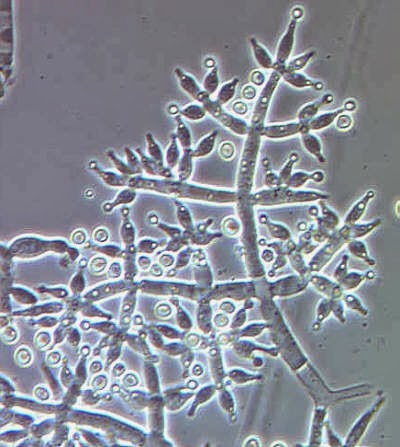Researchers mined DOE JGI’s database of fungal genomes for candidate enzymes for use in a variety of industrial processes.
The Science
By screening genomes of fungi made publicly available by the DOE Joint Genome Institute researchers identified new versions of enzymes called lipases and sterol esterases. To further study the most promising enzymes, they created 3D models and compared them with enzymes currently used for a wide variety of industrial purposes.
The Impact
Lipases and sterol esterases are widely used in industries such as food production, textiles, cosmetics and pharmaceuticals. By harnessing genome data available through JGI’s fungal database, MycoCosm, the researchers identified enzymes search that may prove useful for manufacturing – and possibly biofuel production – and seem to be improvements on currently used enzymes.
Summary

One of the enzyme genes studied was tagged in the genome of Trichoderma, a genus of fungi commonly found in forest and agricultural soils. Image courtesy of U.S. Department of Agriculture, Agricultural Research Service, Systematic Botany and Mycology Laboratory, via Wikimedia Commons.
Almost all living things produce lipases, enzymes that aid the breakdown of fats. Mammals use sterol esterases to process cholesterol. Both are found in a group of fungi called ascomycetes, or sac fungi. A research team from the Biological Research Center at the Spanish National Research Council in Madrid, Spain, reported on their efforts to find novel lipases and sterol esterases in a paper published October 18 in the journal BMC Genomics.
They identified 56 different potential enzymes by screening the genomes and studied the evolutionary relationships between them. They then picked six for further analysis, creating 3D molecular models of them. They noticed that compared with widely used lipases generated from the bacteria Candida rugosa, several of the lipases they identified had structures that hinted that they might do the job of breaking down fats better than the lipases industrial processes rely on now.
All six enzymes were from fungi that live off plants, including the fungi that cause black mold on fruits and vegetables, Aspergillus niger. In these fungi, lipases and esterases are used to break down cell walls or the waxy cuticle that covers plant leaves. This suggests that these enzymes might be useful for processing biofuels, among other uses.
Understanding how fungi use enzymes to break down tough, woody plant matter such as lignin and cellulose are essential for converting plant matter into biofuels. This research builds on results from the DOE JGI’s Fungal Genomics Program “Biorefinery” initiative, which seeks to explore methods to convert large organic molecules such as cellulose into simple sugars (e.g., glucose and xylose) that can then be made into biofuels employing fungal hosts and adapting them for large-scale industrial processes.
Contact
Maria Jesus Martínez
[email protected]
Biological Research Center
Spanish National Research Council
Madrid, Spain
Funding
National Research Council of Spain (CSIC)/U.S. Department Energy, Office of Science
Publication
Jorge Barriuso, Alicia Prieto and Maria Jesus Martínez Fungal genomes mining to discover novel sterol esterases and lipases as catalysts. BMC Genomics 2013, 14:712 18 October 2013
doi:10.1186/1471-2164-14-712